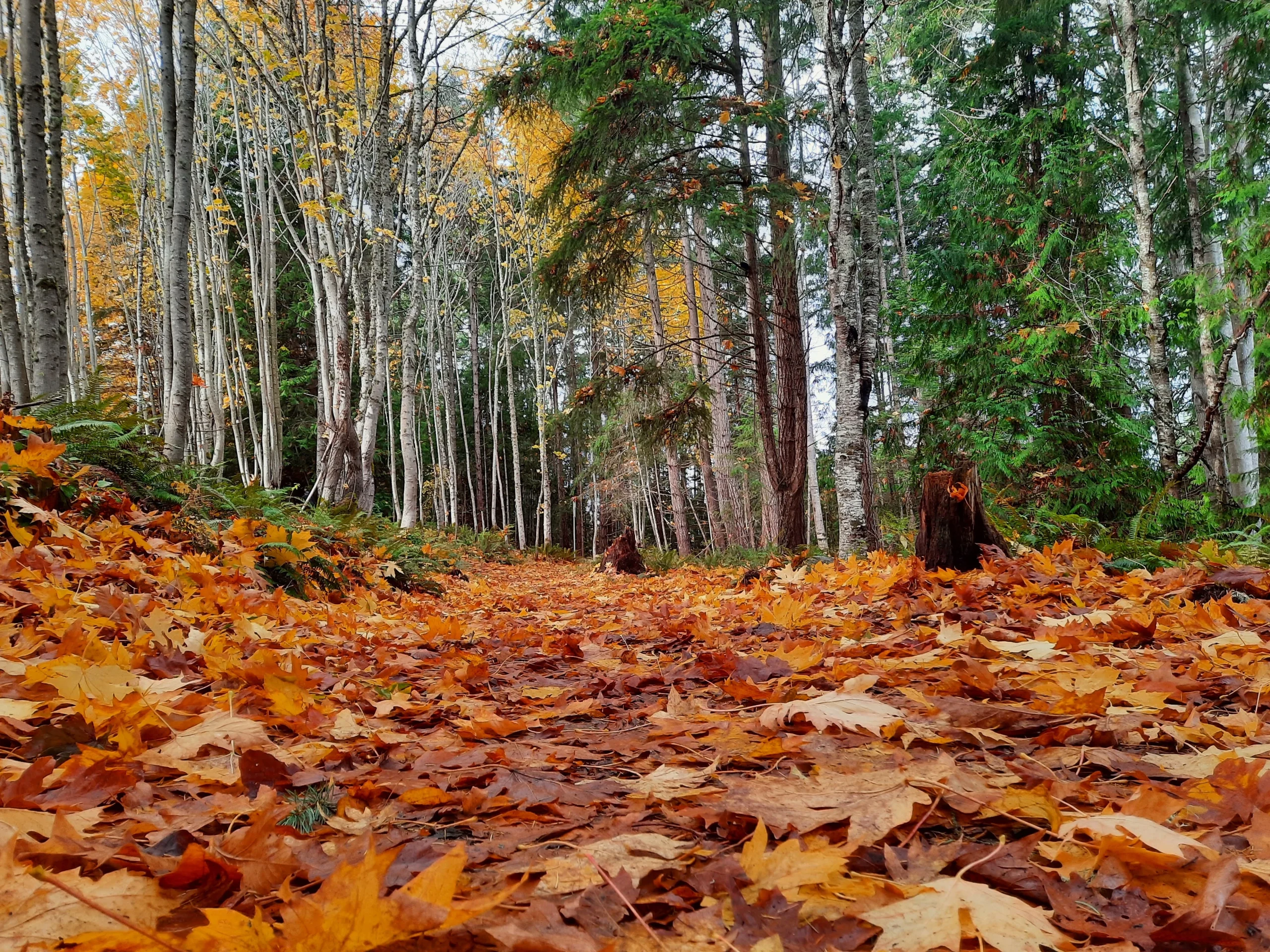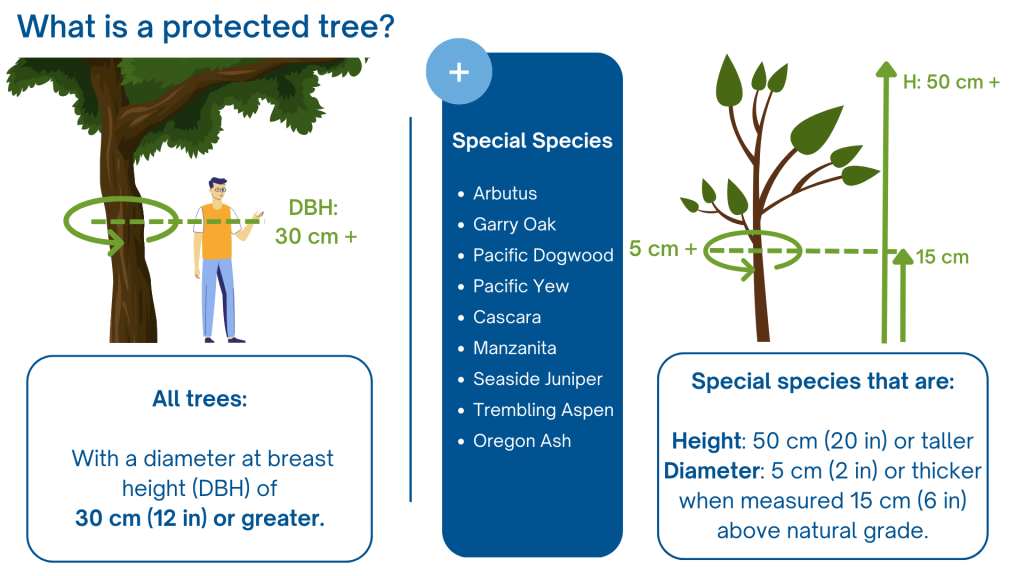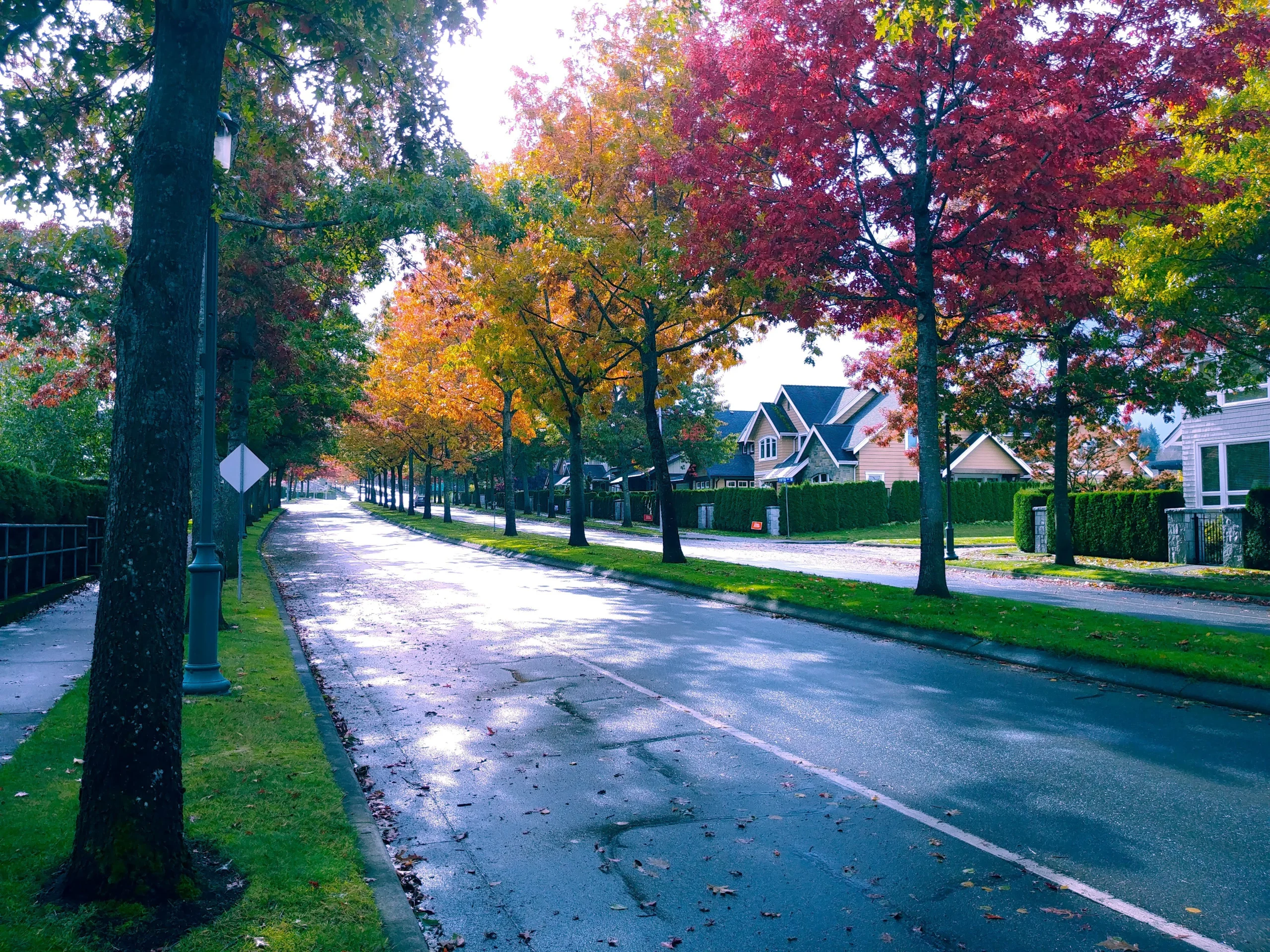The Tree Protection Bylaw manages the natural tree canopy and preserves native trees for future generations. A permit may be required to enable tree cutting and alteration under specific conditions.
Tree Removal Permit & Bylaw

Tree Removal Permit FAQ

A protected tree is any tree that meets one of the following criteria:
- Any tree having a diameter at breast height that is 30 centimetres (12 inches) or more.
- Any of the following tree species 50 centimetres (20 inches) or more in height, or 5 centimetres (2 inches) or more in diameter when measured 15 cm (6 inches) above natural grade.
- Arbutus (Arbutus menziesii)
- Garry Oak (Quercus garryana)
- Pacific Dogwood (Cornus nuttallii)
- Pacific Yew (Taxus brevifolia)
- Cascara (Rhamnus purshiana)
- Manzanita (Arcotostaphylos columbiana)
- Seaside Juniper (Juniperus maritima)
- Trembling Aspen (Populus tremuloides)
- Oregon Ash (Fraxinus latifolia)
- Any replacement tree planted as a condition of a prior permit.
- Any tree within an Environmental or Hazard Development Permit Area as designated in Town of Qualicum Beach Official Community Plan Bylaw No. 800.
- Any tree planted or retained as a requirement of a subdivision application, development permit or building permit.
- Any tree with evidence of a nest or use by:
- Raptors as defined in the Wildlife Act, R.S.B.C. 1996, c. 488
- Ospreys
- A heron colony
- Any cavity-nesting bird species.
Removing a ‘protected tree’ requires a permit, unless it falls under one of the following four categories:
- Protected trees posing an imminent danger. A permit is not required to cut a protected tree if it poses an imminent danger of falling and injuring persons or property. A hazard tree must be identified by a qualified Tree Risk Assessor as having defects that significantly increase the risk of the tree or a part of it falling and causing personal injury or property damage.
- Trees on residential properties (maximum one protected tree every two calendar years), provided the property is not located on a slope and that the tree is not one of the following species that is 50 centimetres (20 inches) or more in height or 5 centimetres (2 inches) or more in diameter when measured 15cm (6 inches) above natural grade.
- Arbutus (Arbutus menziesii)
- Garry Oak (Quercus garryana)
- Pacific Dogwood (Cornus nuttallii)
- Pacific Yew (Taxus brevifolia)
- Cascara (Rhamnus purshiana)
- Manzanita (Arcotostaphylos columbiana)
- Seaside Juniper (Juniperus maritime)
- Trembling Aspen (Populus tremuloides)
- Oregon Ash (Fraxinus latifolia)
- Protected trees on properties larger than one acre (maximum one tree per acre, per year).
On properties larger than one acre, a property owner can remove one protected tree for each acre in a lot, per calendar year, up to a maximum of ten trees per lot per calendar year. Tree cutting rights established under point 2 and 3 do not apply in the following exceptions:- The protected tree is a Garry Oak, Arbutus, Pacific Yew or Pacific Dogwood.
- The tree has a diameter at breast height that is 75 centimetres (29.5 inches) or more.
- The tree is a protected tree within a Hazardous Lands Development Permit Area or Ecological Development Permit Area, as defined in Town of Qualicum Beach Official Community Plan.
- Hedge pruning.
A permit is not required for hedge pruning unless it’s within a Steep Slope Development Permit Area, as defined in Town of Qualicum Beach Official Community Plan Bylaw No. 800. - Protected trees on provincial or federal lands.
This bylaw does not apply to trees on provincial or federal lands. - Silviculture.
This bylaw does not apply to trees on land where “Silviculture” is a permitted use in the zoning.
A permit to cut a tree is required if a tree cutting does not fall under the exemptions listed above or exceeds their limits. A permit is also required if the tree to be cut or altered is not a protected tree, but its removal process disturbs the protected root zone of one or more protected trees.
Two replacement trees must be planted and maintained for each tree that is removed from the applicant’s parcel.
A protected root zone is the area of land surrounding the trunk of a tree that contains the critical root system of the tree.
A certified arborist can define the area of a protected root zone by preparing a tree protection plan. If such information is not available, then the protected root zone is the circle of land around a tree with a radius that is equal to the tree’s diameter at breast height (DBH) multiplied by 18. Simply, a circle with the following radius:
Radius = DBH x 18
Activities not permitted in a protected root zone, unless specified otherwise by a valid permit:
- Damaging or undermining the roots of a protected tree growing.
- Operating trucks, backhoes, excavators or other heavy equipment.
- Placing fill, building materials, asphalt or a building or structure on land.
- Denting, gouging or damaging the bark, trunk, branches or roots of a protected tree.
- Depositing concrete washout or other liquid or chemical substances harmful to the health of a protected tree.
- Removing soil.
- Blasting within 2x the protected root zone radius of a protected tree.
- Topping a protected tree.
- Altering the groundwater or surface water level within the protected root zone of a protected tree.
Permits expire six months from the date of issue or at an earlier date if specified in the permit.
With written request, permits may be renewed, extended or modified, if:
- The tree cutting or removal operations authorized by a permit are not completed before the permit expires.
- It becomes necessary to alter the details of permit application or the tree cutting and replacement plan submitted for a permit.
Yes, two replacement trees must be planted and maintained for each tree that is removed on the applicant’s parcel. Replacement trees must be planted within 90 days of the date of issuance of the tree cutting permit, unless construction or site disturbance activities are planned that would affect the planting of replacement trees.
- All replacement trees must be planted and maintained following sound horticultural and arboricultural practices.
- If the trees that are removed form part of a hedge, it may require that less than two replacement trees be planted.
- Alternatively, payment of $1,000 dollars per replacement tree may be accepted, which will be used to cover the Town’s costs for the planting and maintenance of replacement trees.
The application for a tree cutting permit needs to include all required information as outlined in the application form. Review the Qualicum Beach Tree Protection Bylaw carefully before submitting an application.
- The Tree Protection Bylaw may be enforced by Municipal Ticket Information (“MTI”). If convicted, a person is liable to pay the full amount of the penalty and fine prescribed in the Town of Qualicum Beach Municipal Ticket Information Bylaw No. 626.
- Any person who violates any provision of the Tree Protection Bylaw or enables others to do so commits an offence against this bylaw and is liable to a fine of up to $50,000 in addition to the costs of prosecution.
- Every individual unauthorized protected tree removal and every individual failure to replace a protected tree in accordance with an issued permit constitutes a separate offence.
- Each tree altered in violation of this bylaw and each day that a violation of this bylaw is caused or permitted to exist constitutes a separate offence.
- Obstructing the Director of Planning or designates while performing their duties in relation to this bylaw may result in a fine.
- For further details, please refer to the Town of Qualicum Beach Tree Protection Bylaw.
Tree Removal Permit Fees
A non-refundable application fee of $100.
A refundable security deposit of $700 per replacement tree is required before a tree cutting permit is issued.
A refund request for the security deposit can be made in writing:
- Two years after planting the replacement tree(s); or
- After the tree cutting permit has expired without any trees being cut.
Permit fees are exempted if the permit application is for the removal of dead, dying or hazard trees.
Tree Removal Permit Application
PDF applications and payment can be submitted together, by one of the following methods:
- Mail: Planning and Community Development, Town of Qualicum Beach, #201 – 660 Primrose Street, Qualicum Beach, BC V9K 1S7
- In Person: Town of Qualicum Beach, #201-660 Primrose Street, Qualicum Beach, BC
Town Hall hours of operation are Monday to Friday from 9:00 am to 4:00 pm
Tree Removal Appeal Application
If your tree permit was not approved you may appeal the decision to Council. Please complete the Appeal Request Form and submit it by one of the following methods:
- Email: Complete the fillable PDF form and send it to [email protected]
- Mail: Town of Qualicum Beach, #201 – 660 Primrose Street, Qualicum Beach, BC V9K 1S7
There is no fee to request an appeal, however, appeal requests must be submitted no more than 30 days after receiving the decision on the tree permit application. Council will consider the application and supporting documents when reviewing the appeal.
